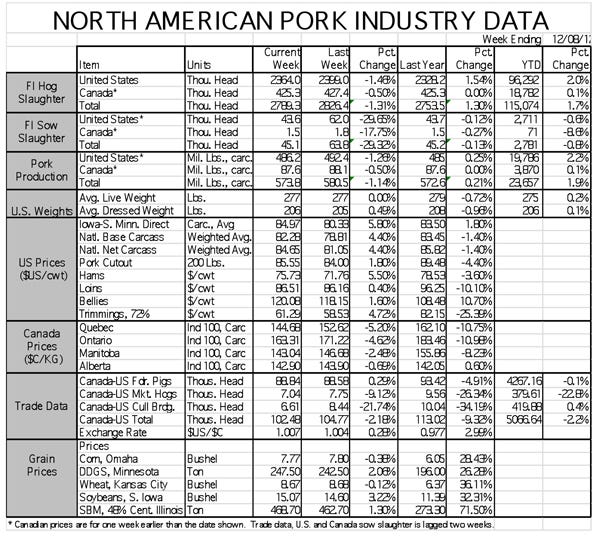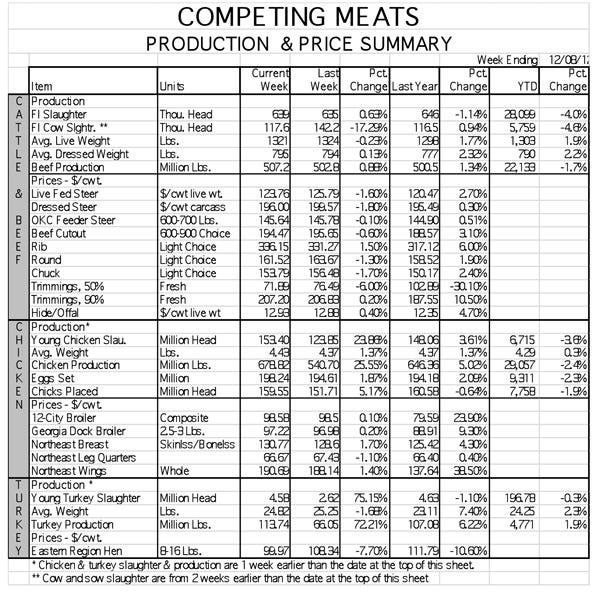The United States’ mandatory country-of-origin labeling (COOL) program was back in the news last week as the World Trade Organization (WTO) announced a deadline of May 23, 2013 for compliance after its ruling that the program violates international trade agreements.
December 10, 2012

The United States’ mandatory country-of-origin labeling (COOL) program was back in the news last week as the World Trade Organization (WTO) announced a deadline of May 23, 2013 for compliance after its ruling that the program violates international trade agreements. This was not a surprise as a WTO appeals panel had ruled in July that its initial decision was correct and, therefore, the United States had to get into compliance or suffer the consequences.
The ruling in no way sets aside the U.S. law. Only Congress can do that. But it does set a date on which consequences can commence if the United States does not “play by the rules” that we have already agreed to. Getting from here to there may be tricky, however.
There are two parts to any law: The legislation itself (which comes from Congress and is signed by the president), and the rules which are written by the administration (in this case USDA) to enforce the law. Laws can leave a lot of room for rule-making discretion or they can be very proscriptive, leaving little leeway for rule-makers.
The best example of the stark differences that can exist, that I am aware of, are in the Livestock Mandatory Reporting Act of 1999 that established the mandatory price reporting system for hogs and other livestock. The hog portion of that act specified the times of day for price publication, the times of day for reporting, the items that had to be reported and a host of other specifics. There wasn’t much wiggle room for rule-makers. The lamb/sheep portions said, in effect, “The Secretary of Agriculture shall write rules for a mandatory sheep and lamb price reporting program.” Everything was at the discretion of rule-makers.
The mandatory COOL legislation falls somewhere in between those extremes, but it has some specifics that will be difficult to get around. That means Congress may have to change the law and we all know how good that group is at getting things done these days!
Study Verifies Consumers’ Indifference
Enter the recently published results of a study by researchers at Kansas State University (KSU) and Oklahoma State University (OSU). Glynn Tonsor, Ted Schroeder and Mykel Taylor of KSU teamed with OSU’s Jayson Lusk to look at mandatory COOL’s impacts from a variety of viewpoints, including modeling using scanner-derived data, interviews with a sample of shoppers in Texas and national on-line surveys. The results are, I think, revealing. They include:
1. Econometric models using scanner data could identify no changes in consumer demand following mandatory COOL implementation in 2009. That means the demand for beef, pork and chicken did not increase and, therefore, there would be no benefits derived from COOL. Demands did change due to prices, incomes and other factors but mandatory COOL was not a driver. The beauty of econometric models is that they can parse out these separate impacts.
2. Nearly two-thirds of online survey respondents did not know that mandatory COOL was a law. Less than one-fourth did. Similarly, the majority of in-person survey participants did not know mandatory COOL existed despite the fact that they were standing near a retail meat counter when interviewed. Further, the majority of in-person participants said they never look for origin information on beef and pork products.
3. Consumers would rather have labeled product than unlabeled product. That is consistent with previous research. However, the online respondents revealed approximately equal valuations for products carrying “Product of North America” and “Product of the United States” labels.
With no discernible demand impacts, the benefits of mandatory COOL are, at best, negligible and may be zero. That means the costs of the program are in no way offset and represent a net loss to the industry. Either producers receive “net” less or consumers pay “net” more or some combination of the two. As the KSU-OSU team states, “This finding suggests stakeholders in the beef and pork industries are comparatively worse off.” Note that they do not say “Canadian stakeholders” or “Mexican stakeholders,” clearly implying that American stakeholders are losers.
The final survey finding also suggests that we should implement the least costly of the two labels judged equal by consumers. I said years ago that U.S. consumers view most things from Canada quite favorably. They don’t believe pork from Canadian pigs is bad, so let’s include that, reduce our costs and capture any benefits that “labeling” can provide.
One last point was made in a podcast by KSU’s Tonsor. The findings do not mean a consumer will a) not find value in a country-of-origin label, or b) not act differently depending on the label. The results are aggregate and say that a widespread, mandatory program does not capture any value. Some people, though, place high value on a product’s origin and will pay for specific country information. By all means, label some product that way to a) meet these consumers’ individual needs and b) capture enough extra value to justify the effort. The irony is that providing labels on everything does the first but foregoes the second by providing far more labeled product than these few consumers need.


About the Author(s)
You May Also Like





